Oaxaca is a city high on people’s bucket-list for many reasons. As one of Mexico’s largest cultural hubs, the city offers copious amounts of history and traditions.
As an epicentre of artistic creation, a short stroll through the city will reveal many of its temptations; streets lined with customary ceramic shops and mezcal producers, unique handwoven textiles that have been produced in neighbouring towns for hundreds of years, stimulating galleries and enticing street art; it’ll come as no surprise as to why Oaxaca attracts so many.
As with any city, the numerous activities, restaurants and locations can be overwhelming. So, whether you have just a few days or can squeeze in a week to explore this colourful city, keep reading to explore our unmissable recommendations for your next visit to Oaxaca.
What to do and see
Without a doubt, the best way to explore the city is by foot. Stroll through the cobbled streets and winding lanes; pick up a Oaxacan ice-cream (nieve) from street vendors, or indulge in a tlayuda (a large corn tortilla filled with Oaxacan cheese, fresh ingredients and meat), before heading into independent ceramics, clothing or charity shops that catch your eye.
Don’t miss Santo Domingo church, surrounded by neighbouring markets and bars. Absorb the striking Mexican architecture whilst strolling through the streets, in particular Andador de Macedônia Alcalá street, which displays vivid coloured buildings and Spanish colonial architecture. Meander over to one of Oaxaca’s oldest boroughs Xochimilco, where you can marvel at the street art after visiting one of the charming cafes. We recommend starting the day with breakfast at Antique Café which has a picturesque patio, before popping into the gallery Once in Oaxaca.
If you’ve come to Oaxaca to shop, you won’t be disappointed. Here are some favourites:
- Vikers Vintage/ Thrift shop – Calle de Tinoco y Palacios 613
- MEXCHIC – C. Manuel Bravo 307
- Oaxaca Artisan Market – Gral. Ignacio Zaragoza
For the best value ceramics in town, head to Abastos market, a 25-minute walk from the centre. Pick up vibrant painted jugs, vases and cups for just £3.50. Traditionally, Oaxaca has three variations of pottery; green, red and black, that each originate from different districts outside of the city, but found in this market for next to nothing. Beware of your valuables, this market is primarily for locals but we had no trouble on our visit.
Looking to purchase ceramics closer to the city centre? Cooperativa 1050º is a picturesque spot, with shelves lined with 21st Century products that look like they’ve come straight out of Artemest (but for the fraction of a price). You’ll mainly find red pottery, with items listed with a higher price bracket than in Abstatos.
One of the best ways to experience the creative side of Oaxaca is by attending a class. Whether that’s in cooking, art or ceramics, the city offers a host of some of the most incredible workshops in the world to get your creative juices flowing.
For cooking, La Cocina de Humo just west of the city offers incredibly intricate classes. From the talented 26-year-old up and coming Mexican chef Thalia Barrios, in these classes you’ll learn different ancestral techniques and traditional Oaxacan recipes.
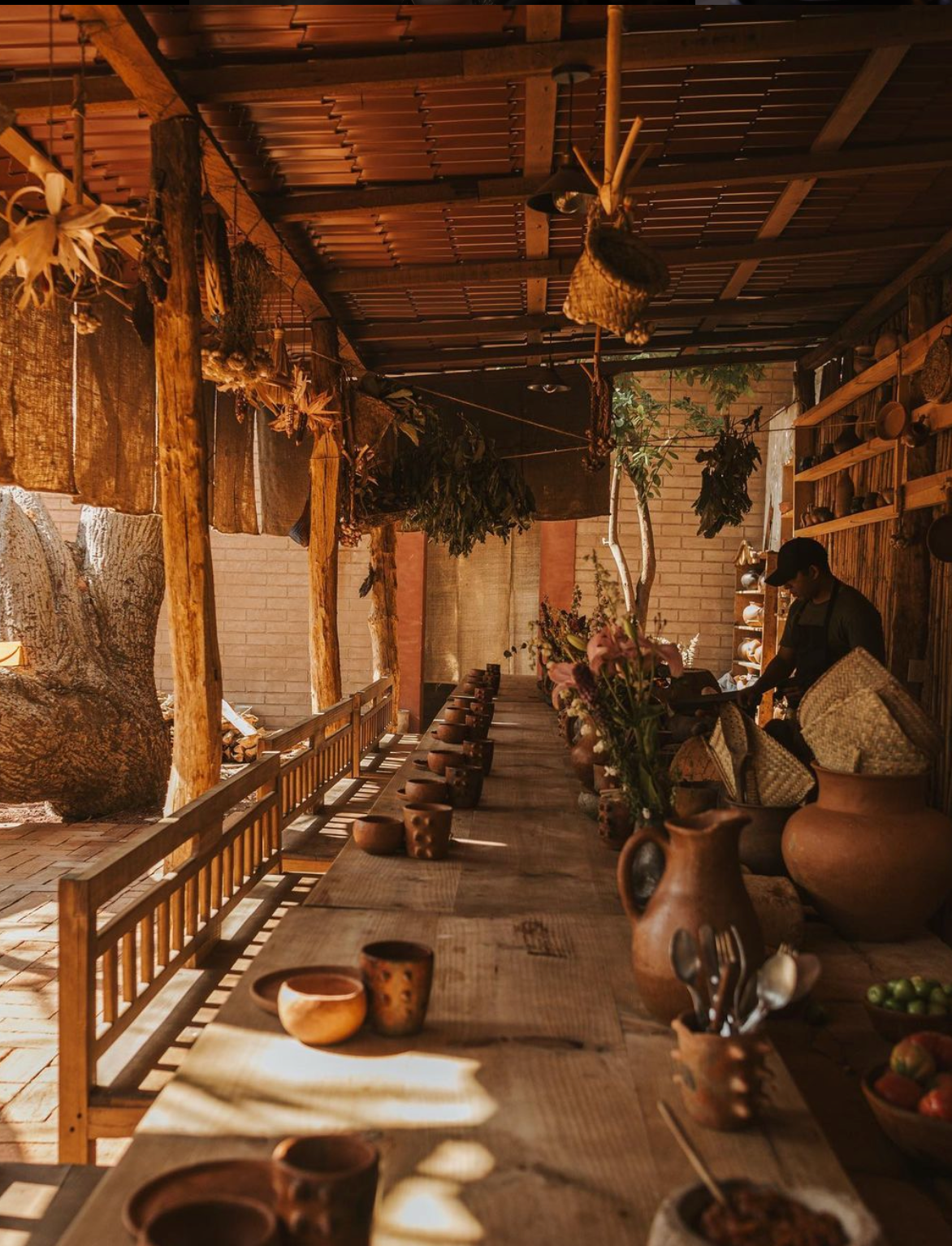
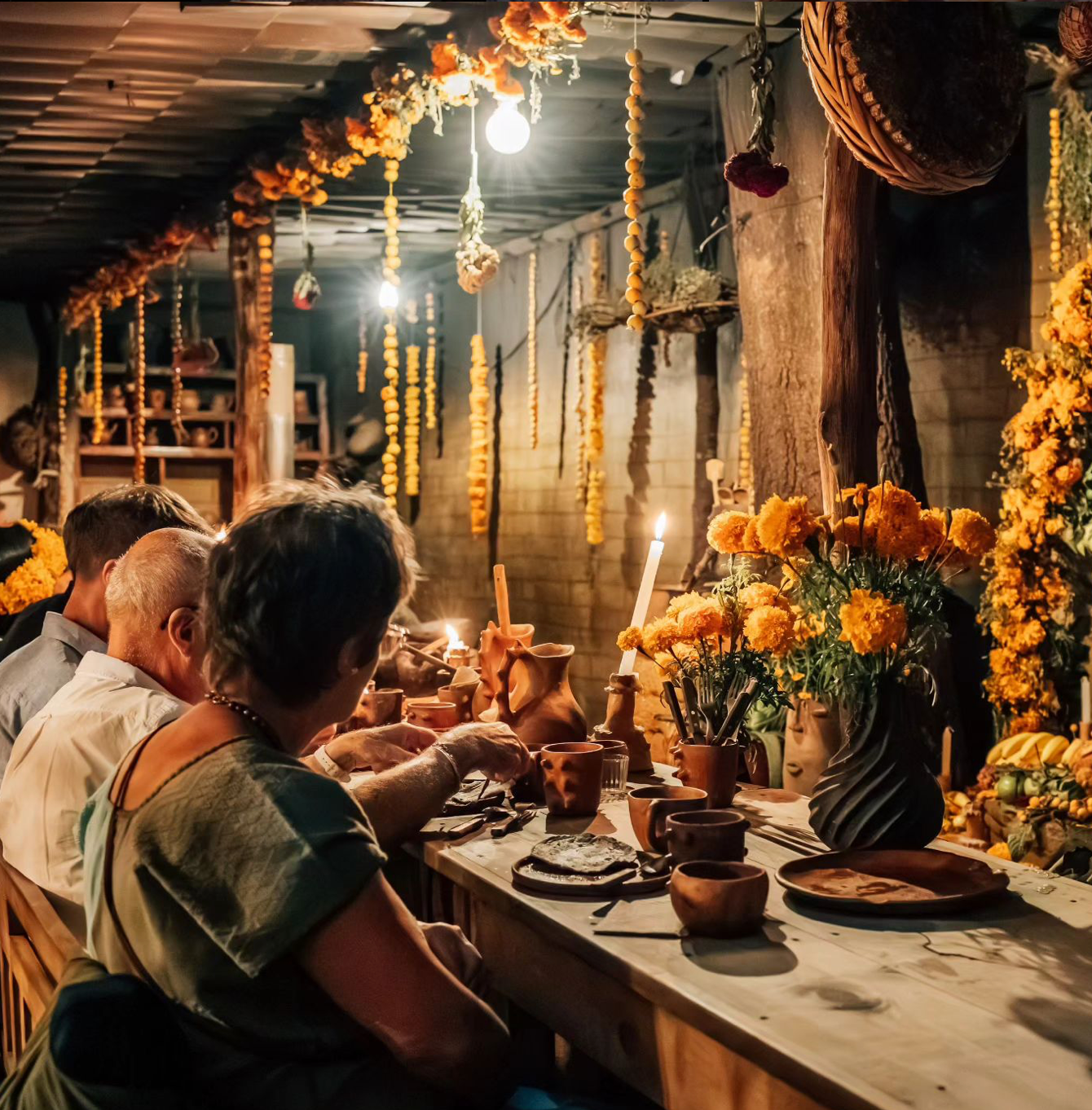
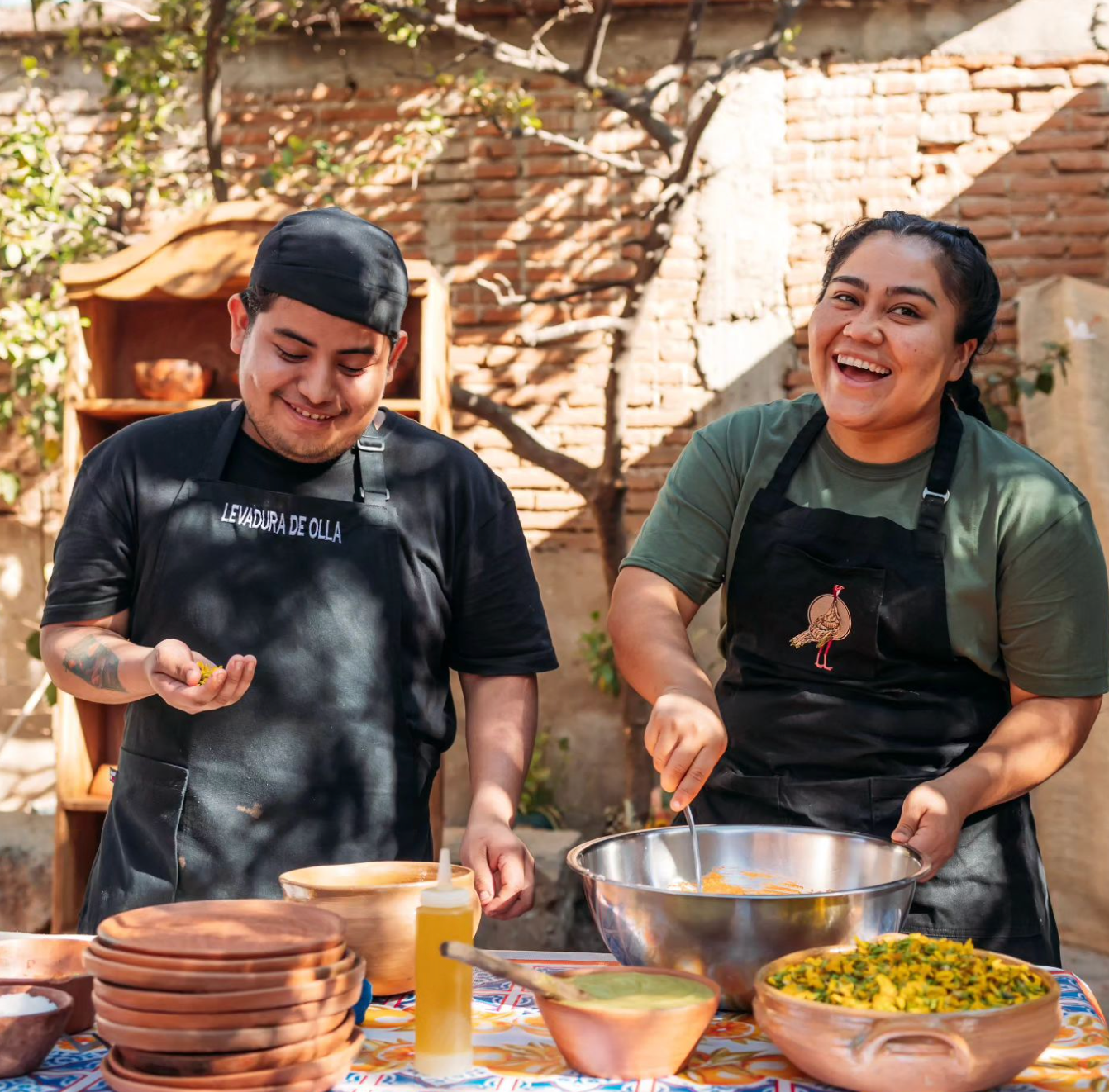
Around the city, you’ll spy a distinct style of art amongst galleries, shops and on the streets; wood blocking. In many of Oaxaca’s galleries you can join a wood blocking class, and after a little research we found that the one of the best (both in terms of price and teaching) was at Subterráneous. For just 400 pesos (under £20) you can join a 4-hour wood blocking class and create your own print to take home.
Our favourite galleries:
- Arte de Oaxaca
- Galería Talismán Oaxaca
- Espacio Zapata – also offers wood blocking workshops
Where to drink
There is no chance you can visit Oaxaca without indulging in a little mezcal; tequila’s smokier cousin, with over 80% of the spirit being produced in this region. This artisanal spirit is a deep-rooted part of Oaxacan culture, that dates to the pre-Hispanic era when the technique of agave fermentation was first discovered by the indigenous people of Mexico. Visiting the city without trying a few different mezcalitos (a small – or big, shot of mezcal) would be extremely challenging; seeing as the streets are polluted with a huge number of vendors.
Produced from agave – the same plant as Tequila, mezcal has a far more distinct, smoky palate. With over 200 different types of agave plants, only 30 varieties can be used to make mezcal. This may not sound much, but in fact is far more than tequila, which now uses only one type of agave (the blue weber variety), due to the industrialisation tequila has seen over the last decade. For this reason, there is a deep shared desire to preserve artisanal mezcal amongst the local community.
La Mezcaloteca
A good place to start in preventing industrialisation is to educate drinkers, which is exactly what La Mezcaloteca does. Located downtown, Mezcaloteca (a play on words with biblioteca, which translates to library in Spanish) is much more than just a bar. The aim of this hotspot is to educate and inform visitors about artisanal mezcal; from production methods to tasting notes of varied mezcals, as they teach and guide consumers into understanding which types of mezcal they like best.
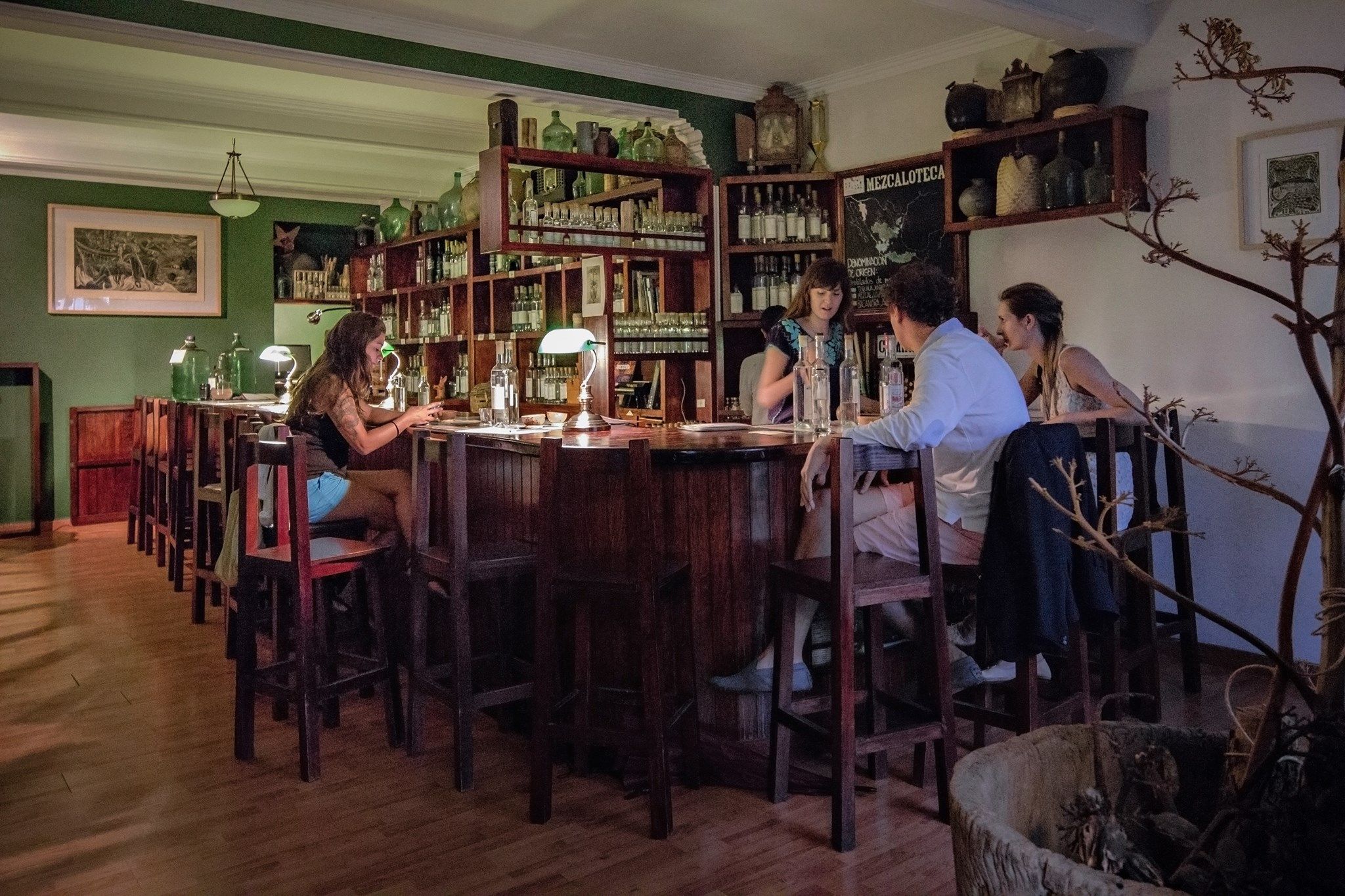
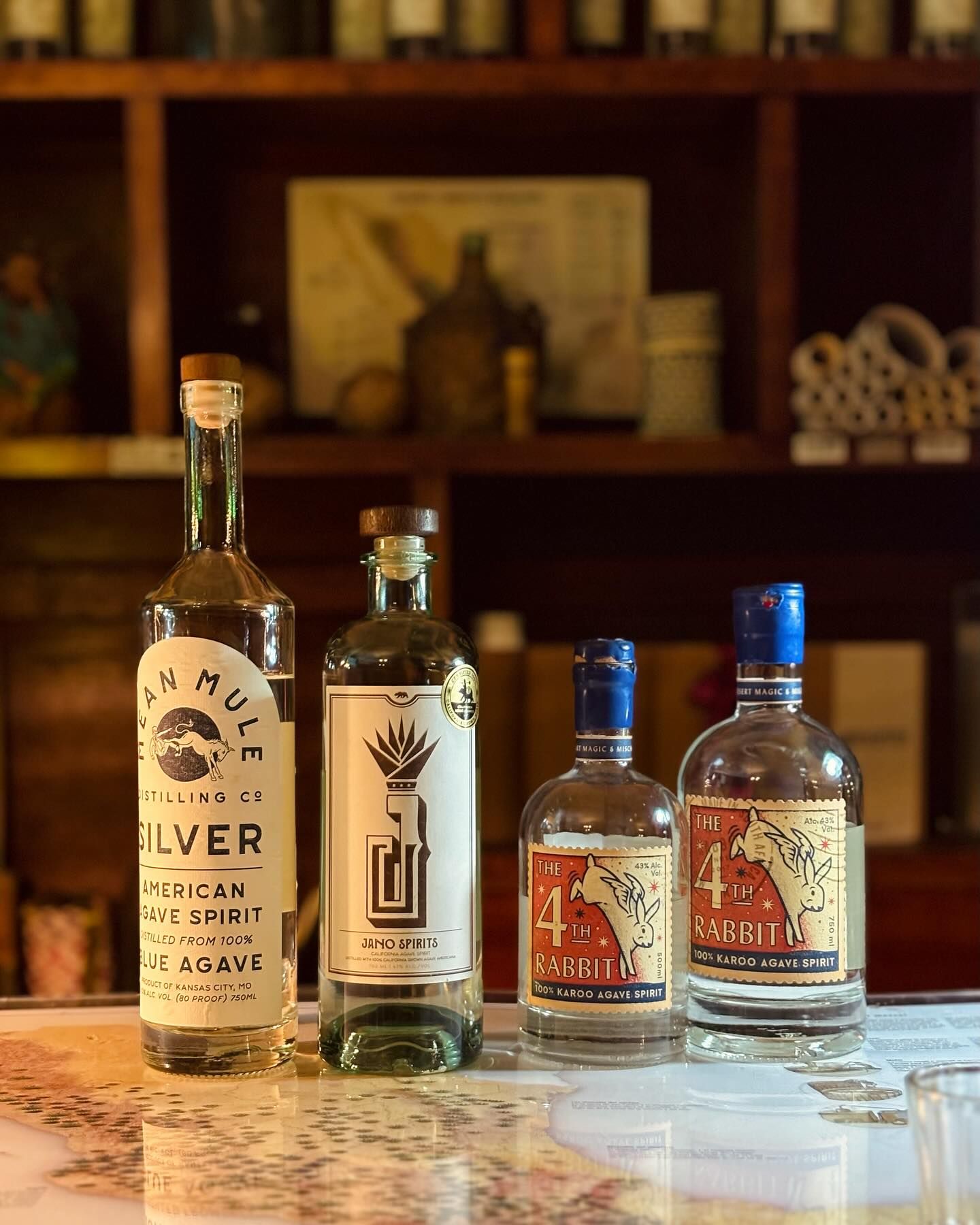
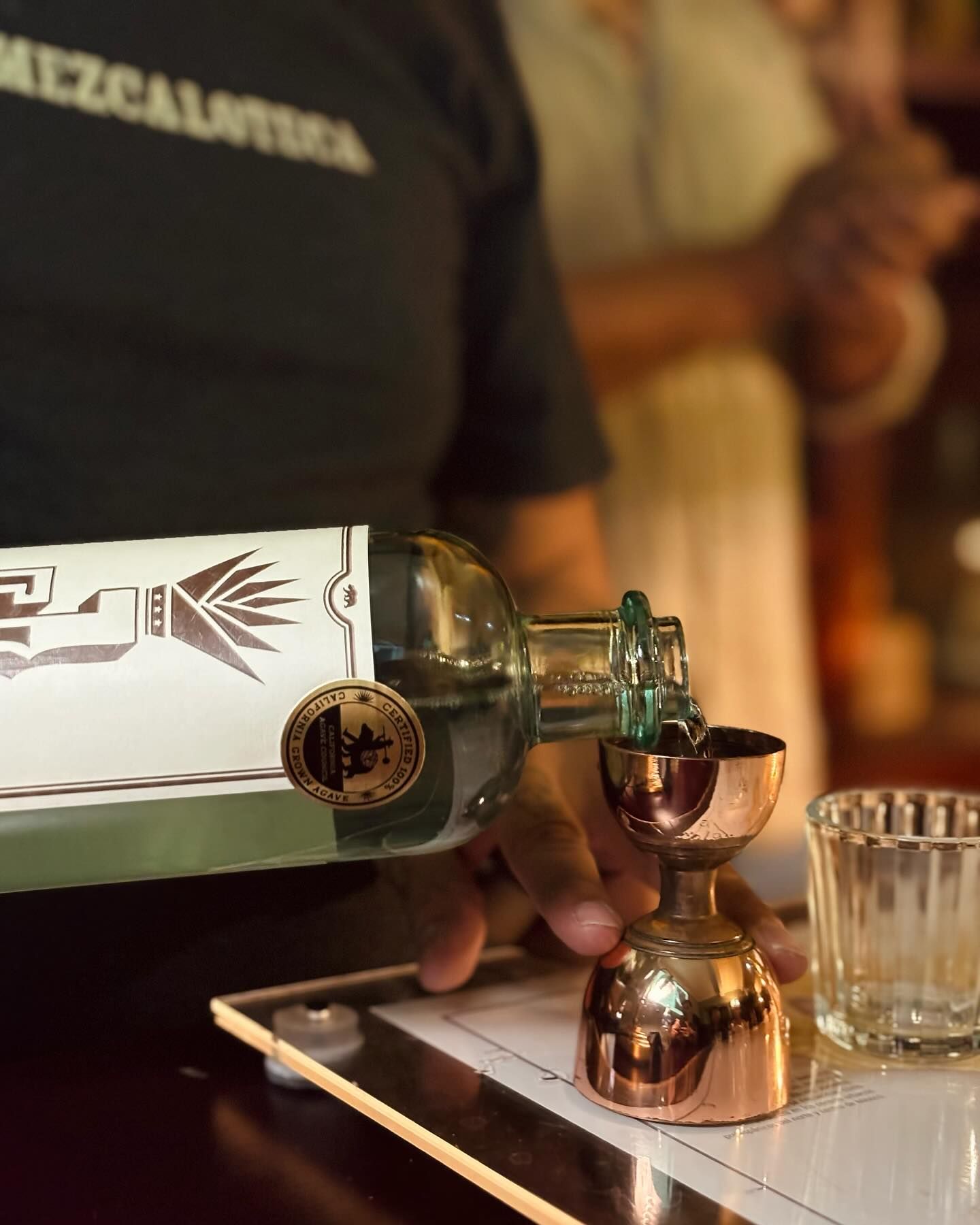
Available by reservation only, you’ll find no music in this bar, so that full focus can be on the mezcal varieties. Open since 2010, word about Mezcaloteca is widely spread by word of mouth. “Mezcal is not a culture, it’s the liquid industry of Mexico,” explained Sylvia, the founder and owner of Mezcaloteca.
You’ll find walls lined with uniform bottles of mezcal, each with an identical label that reveals further details about the contents of the mezcal; where it was made, the barrel type it was distilled in (clay, glass or wood barrels, to name just a few), the terroir, how the agave was smashed (by hand, which makes for a tastier outcome) and of course, the mezcalero that created the product. Once you discover a favourite mezcal, a bottle can be purchased from the bar. All visitors will also receive a small manual that helps identify certain flavours, smells and further education on mezcal in general.
For drink enthusiasts, mezcal (and tequila) lovers, or simply those who want to learn more about the artisanal mezcal industry, La Mezcaloteca is not to be missed.
Los Amantes Mezcaleria
Another great spot to sample some of the best mezcal is in this one-of-a-kind bar. Designed by the renowned Mexican artist Guillermo Olguín, this one room bar is filled to the brim with antiques, collected throughout the years since its opening in 2006. Right around the corner from Santo Domingo church, this bar is expertly located for a pre or post dinner tipple. Pull up a chair and explore a wide range of mezcals – you’ll also be able to indulge in Amantes own series; produced in their own distillery in Tlacolula de Matamoros, Oaxaca
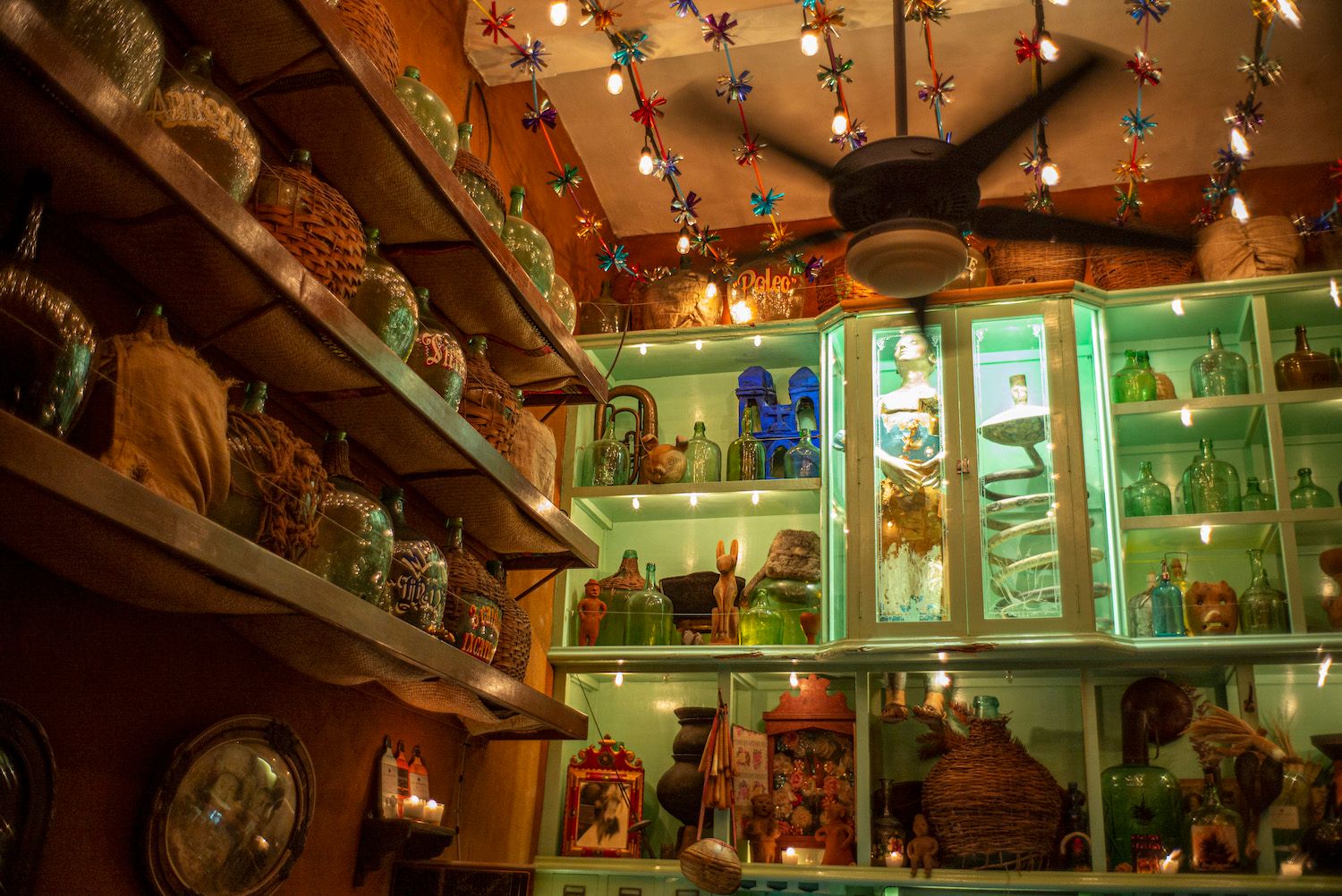
Rooftops
As you mosey through the lanes and look up, you’ll notice many rooftops looming overhead. Some of our favourites?
- Terraza Escondito
- Ama Terraza
- Terraza los Amantes
Where to stay
For a fleeting visit our recommendation is to stay central, so you’re walking distance from local markets, shopping, galleries and well, everything. And for that, it doesn’t get much better than Grana B&B. Just a few hundred meters from Santo Domingo church, this serene sanctuary will make you feel a million miles away from the industrious city.
This boho inspired retreat takes inspiration from the grana-covered cactus, a theme that runs throughout the 18th Century property. The stunning spacious white building is centred around a grand open-plan courtyard, the hub of the B&B; that really, is much more than this underwhelming label. The space manages to feel secluded despite being so central, with a respectable 14 modern, breezy rooms.
Filled with heritage and colonial tradition, Grana manages to also maintain a contemporary design that runs throughout the boutique hotel; a blend between old and new Mexican design. Kitchen lovers, be prepared to discover the kitchen of your dreams; filled with hand crafted pottery and local knick knacks, it’s a true representation of the very best of Oaxacan style.
We suggest starting your morning with a complimentary yoga session, followed by a generous breakfast spread bursting with fruit, homemade pastries alongside a weekly changing menu of bigger plates that you can enjoy in their charming courtyard, before departing from your sanctuary to explore the city. Allow the close-knit team of staff to help you plan your day.
When it comes to a location that won’t disappoint, Grana B&B is an impeccable choice.
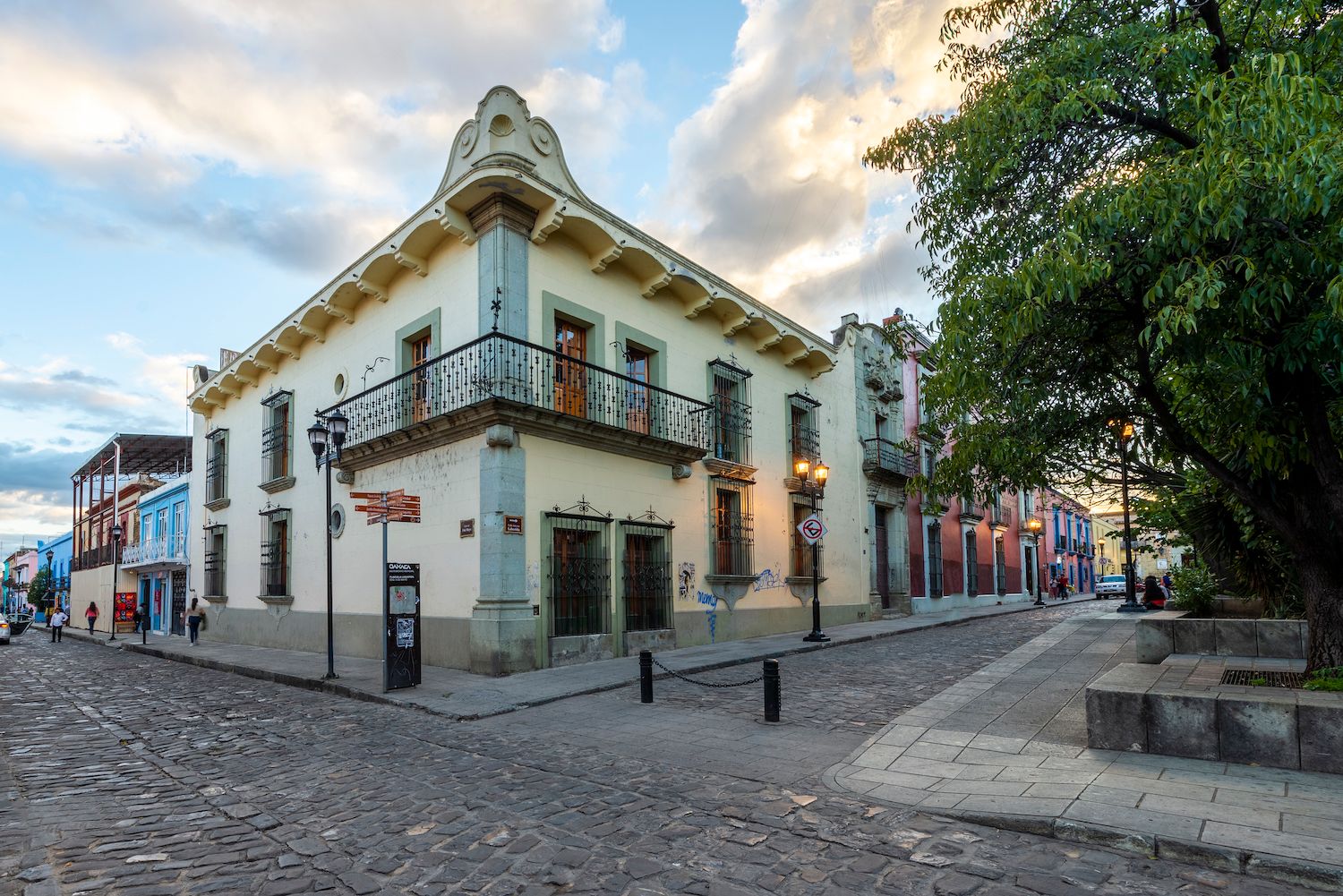
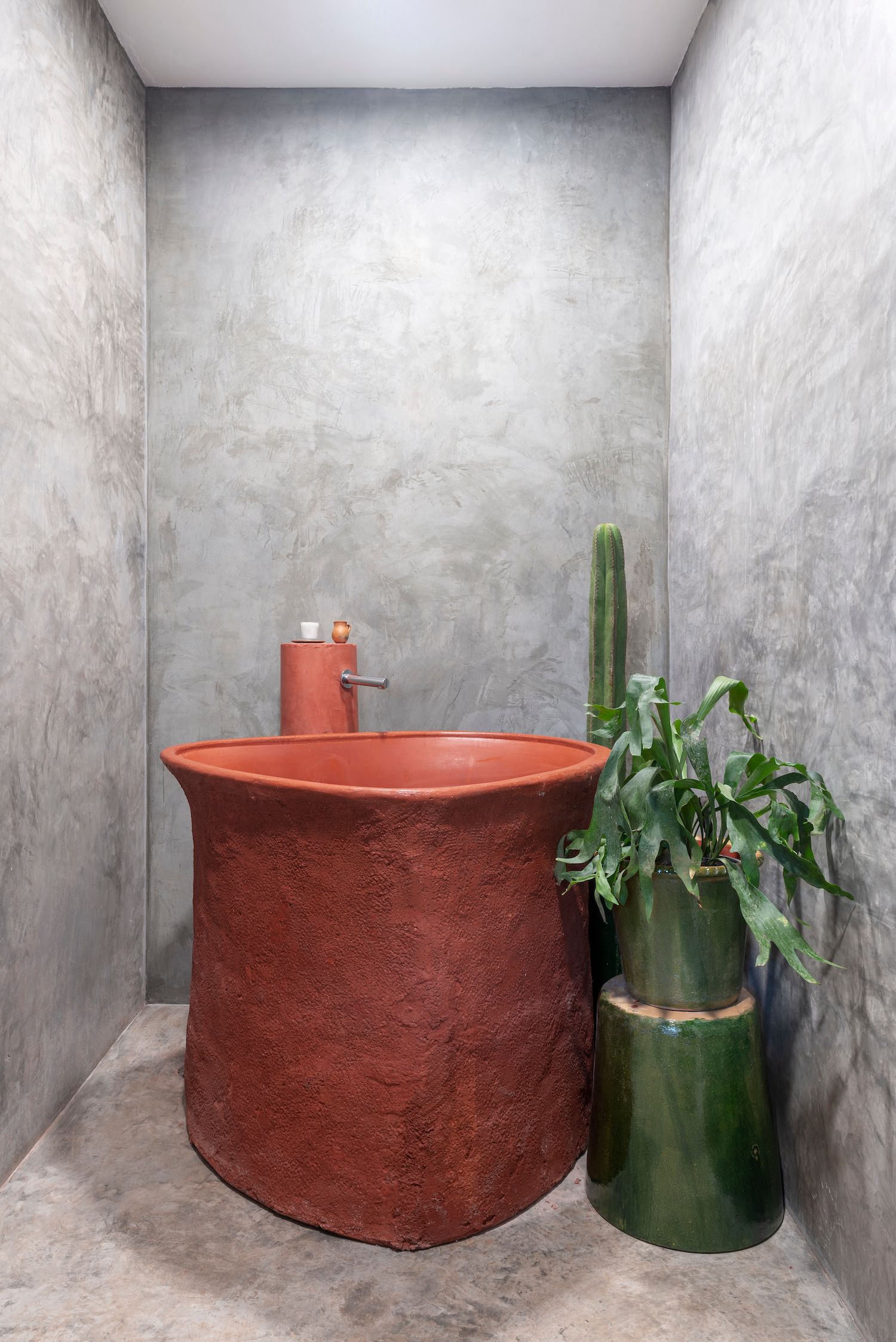
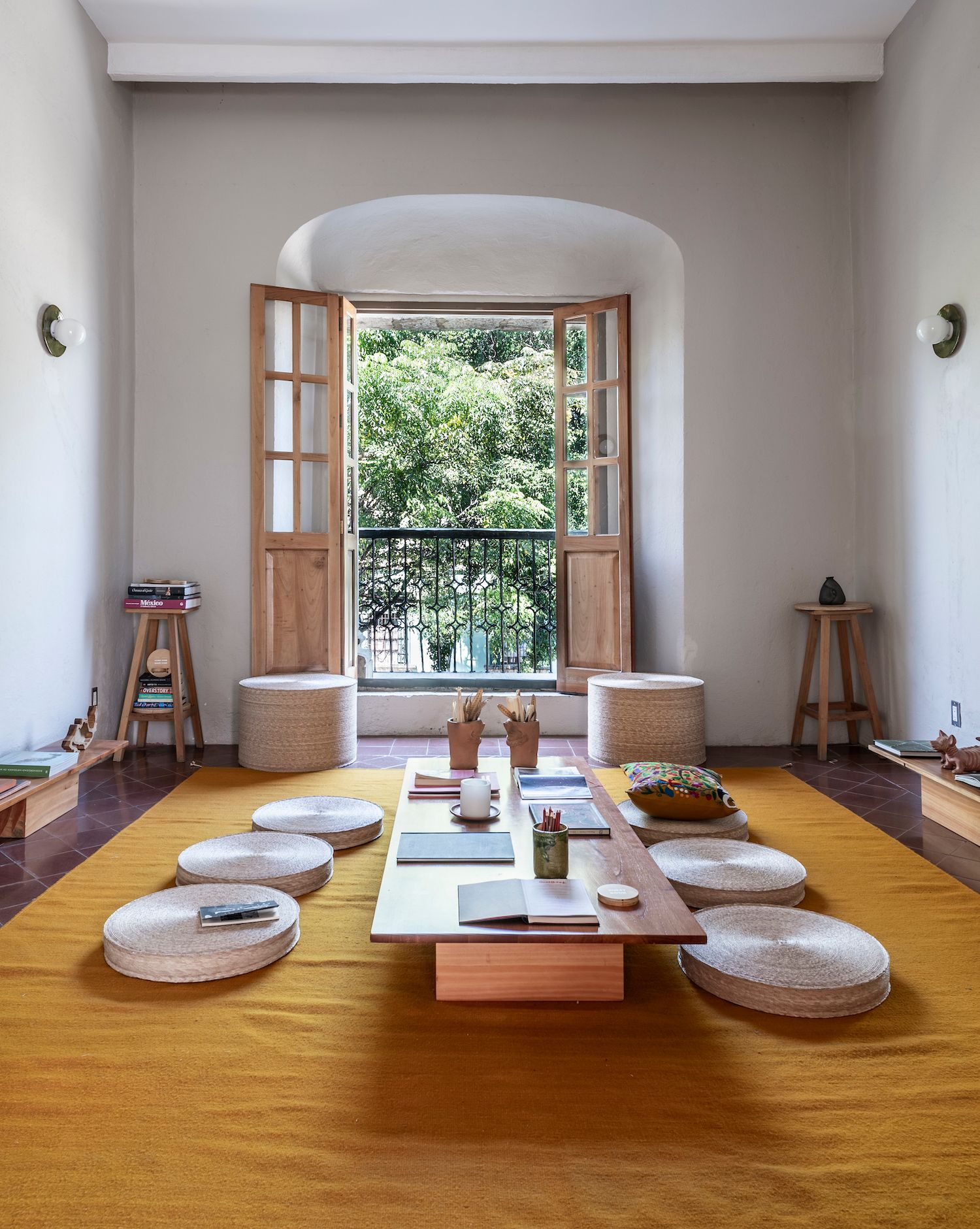
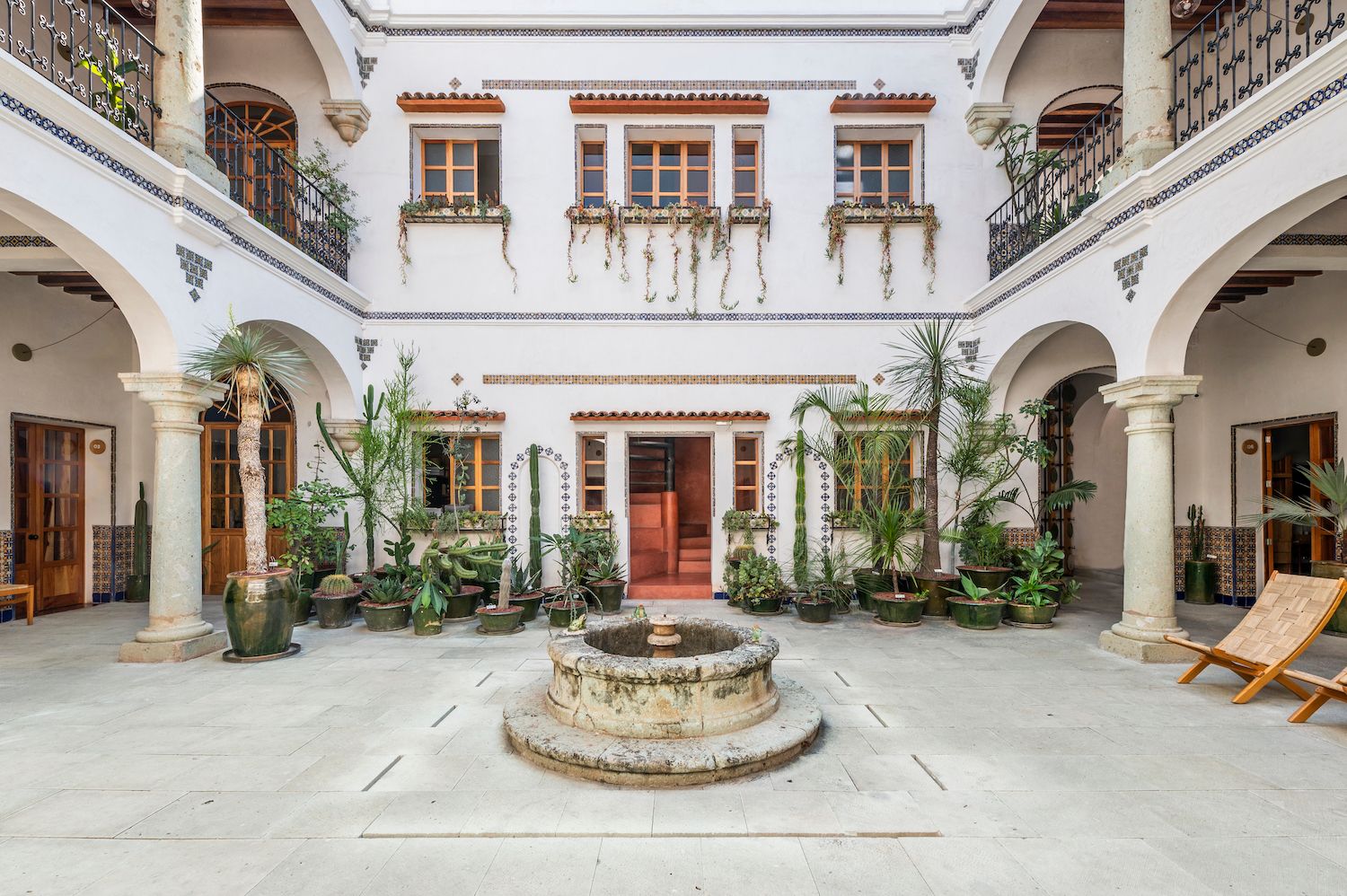
Where to eat
Oaxaca is a city filled with every sort of eatery; so, we explored options to fit every budget.
The absolute best for an elevated price bracket? Without a doubt, Alfonsina stole the show. Just 25 minutes from the city by cab, this restaurant is the childhood home of Jorge Leon, whose mother and fellow chef Elvia still resides there. An amalgamation of home cooking and fine dining; Elvia running the lunch menu that serves home cooked cuisine, whilst Leon runs dinner, a five-star tasting menu. Influenced from his time cooking under acclaimed chef Enrique Olvera (Pujol), Leon has expertly crafted a modern menu with a twist on traditional dishes, that strictly uses homegrown Oaxacan ingredients, collaborating closely with local producers.
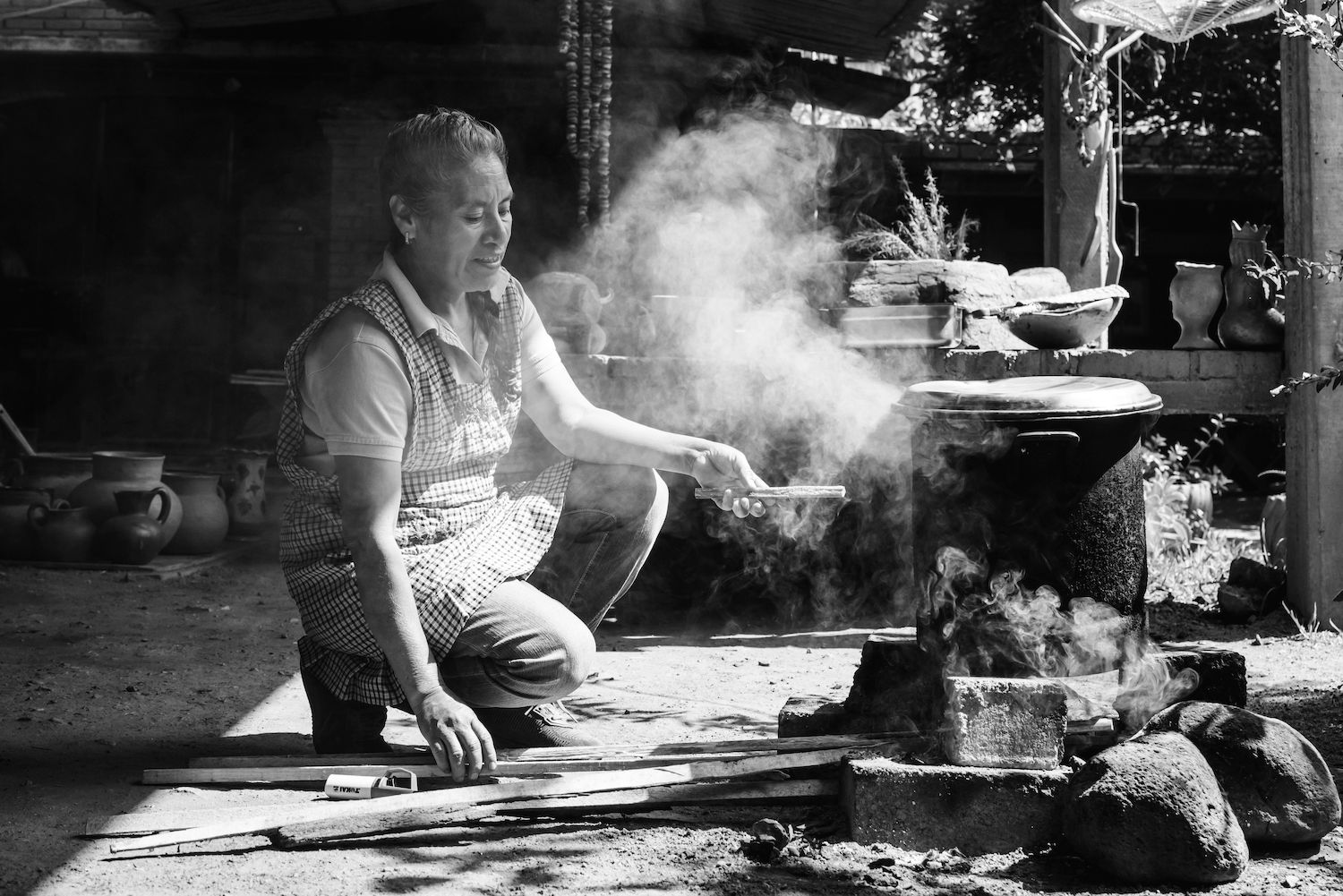
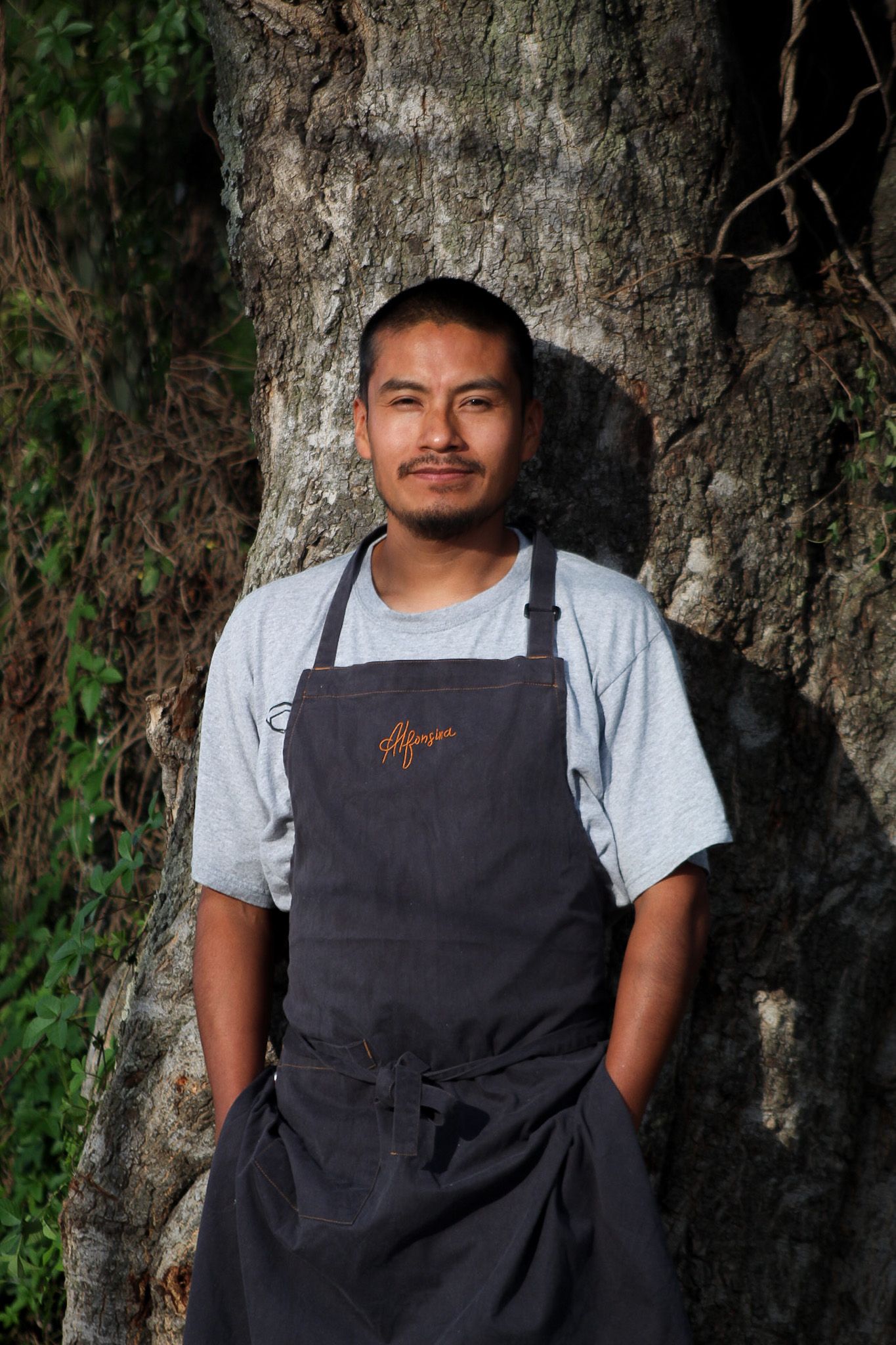
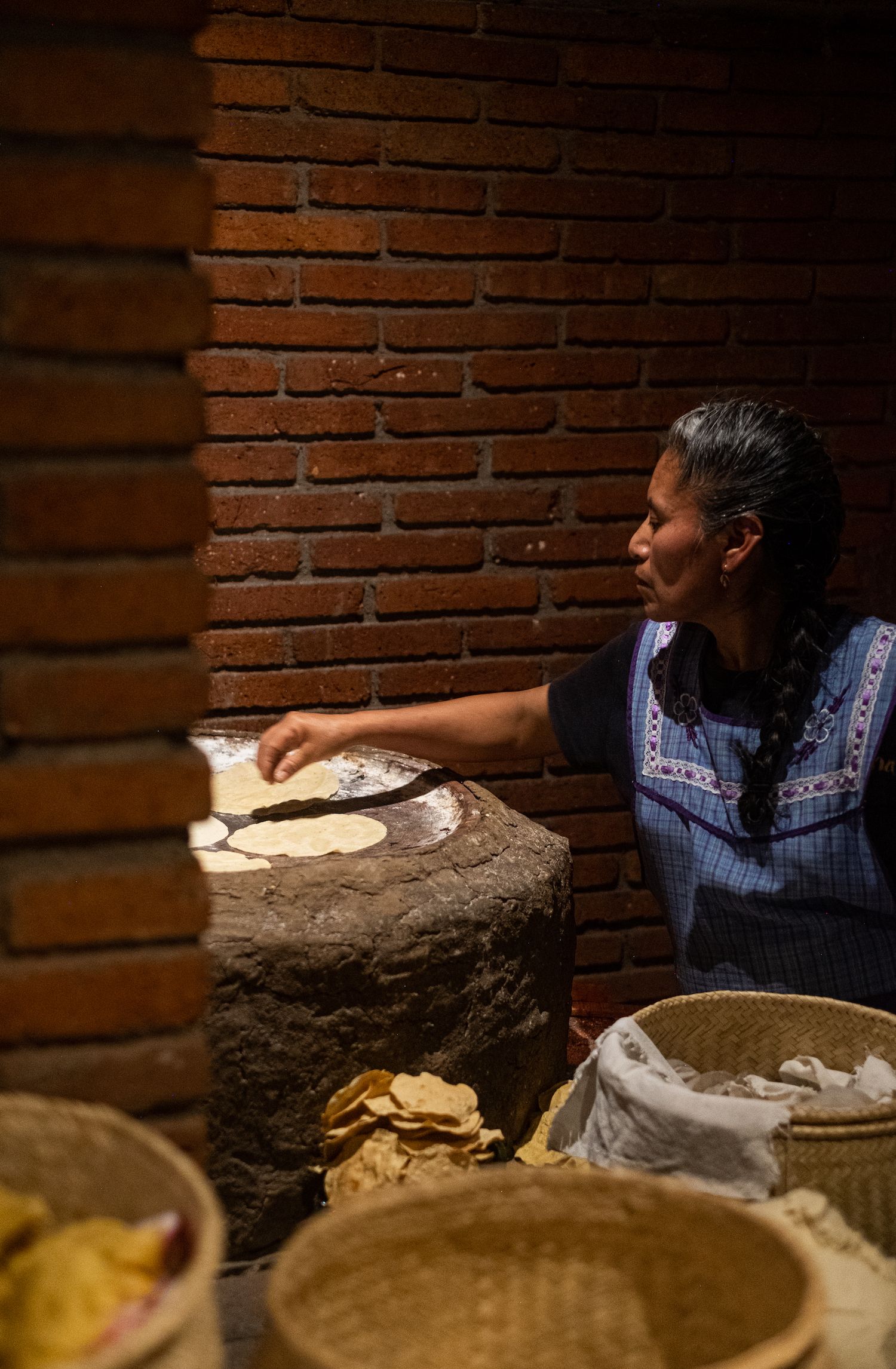
For a modern take on Mexican cuisine head to the Grand Fiesta Americana Hotel. Led by Ovidio Perez Amaya, the hotels Executive Chef, a full range of international dishes can be enjoyed here, but it is the stand out Mexican dishes that are to be explored; tamale with deep fried beef topped with pico de gallo and black mole was exceptional and distinctly unique. ‘Filete de res’ offers a supremely cooked fillet of beef, served with caper mole and topped with huitlacoche tile. The food in this hotel is well worth stopping by for.
For street food, head to 20 Novembire and explore their wide offering. Be sure to pick up tlayudas, memelas and of course, a Oaxacan ice-cream; nieve.
Take a day trip
Whilst the fast-paced city is filled with a large range of crafts, it’s in the surrounding villages of Oaxaca that you’ll find the original birthplace where these artisanal products are made. From the striking black pottery of San Bartolo Coyotepec, the traditional clay region of Atzompa or the exquisite handwoven textiles from Teotitlán del Valle, depending on your interest, we recommend taking an overnight or half day trip to one of these villages (all easily accessible and only about 30 minutes from the city centre).
In Teotitlán, you’ll uncover a quaint community of 5,000 people; most of whom create textiles from scratch. In this tiny town you’ll find streets lined with hand-crafted textiles shops each offering vibrant cushions, patterned quilts and rich multi-coloured table clothes. However, we recommend you to dodge the mainstream line of shops and grab a tuktuk to Lizú Tu Casa, the home of a local family where you can take part in a natural dye and weaving class for just 600 pesos (£25). With three generations of weavers living at this property, discover some incredible textiles and class options.
Whilst you can enjoy a day trip to this town, if you have the time we recommend a night’s stay at Lizú for a real cultural experience with locals. You’ll also then be able to explore the towns lively Sunday market if you stay over the weekend – the best spot in town to try real Mexican cuisine.
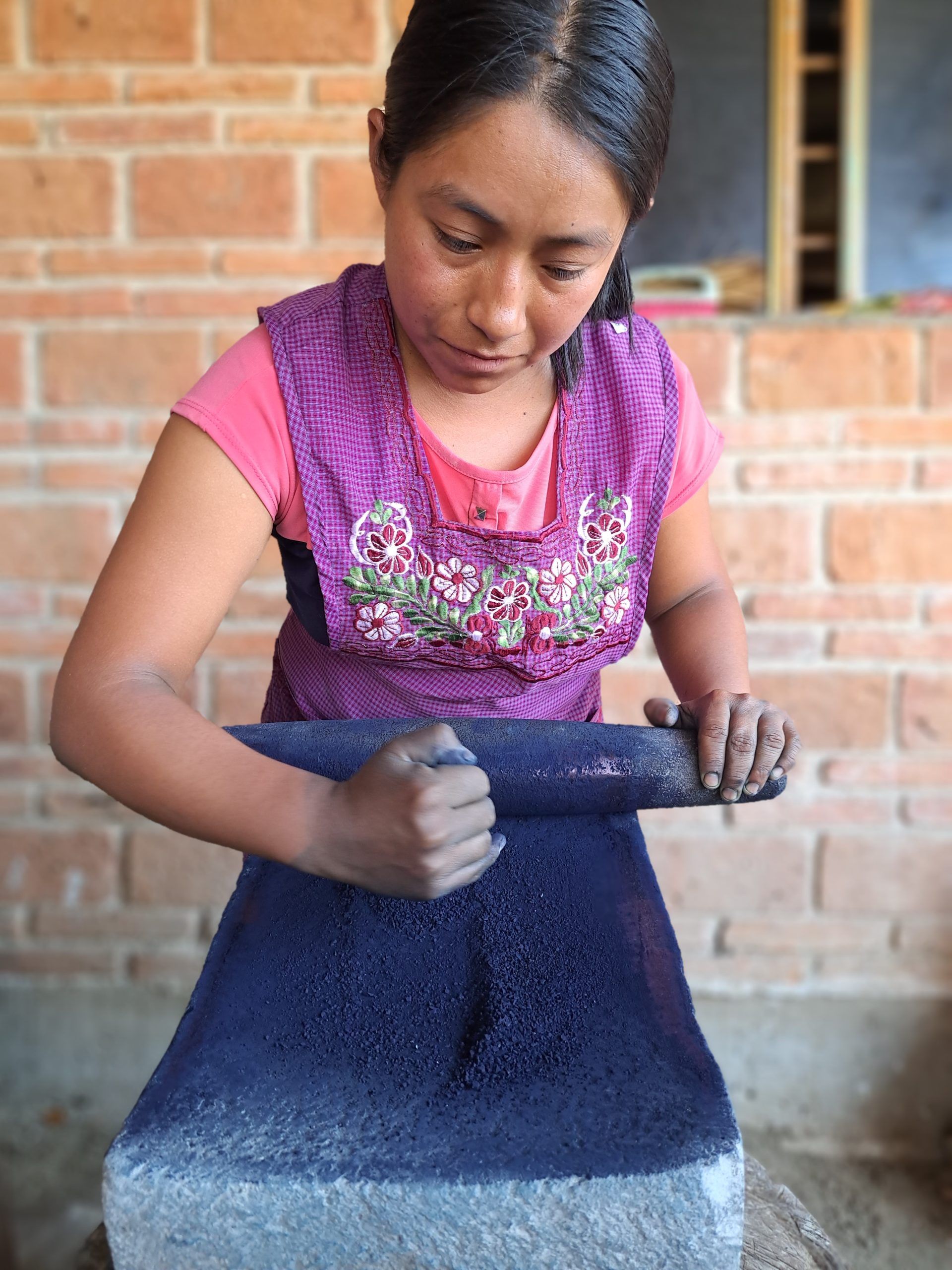
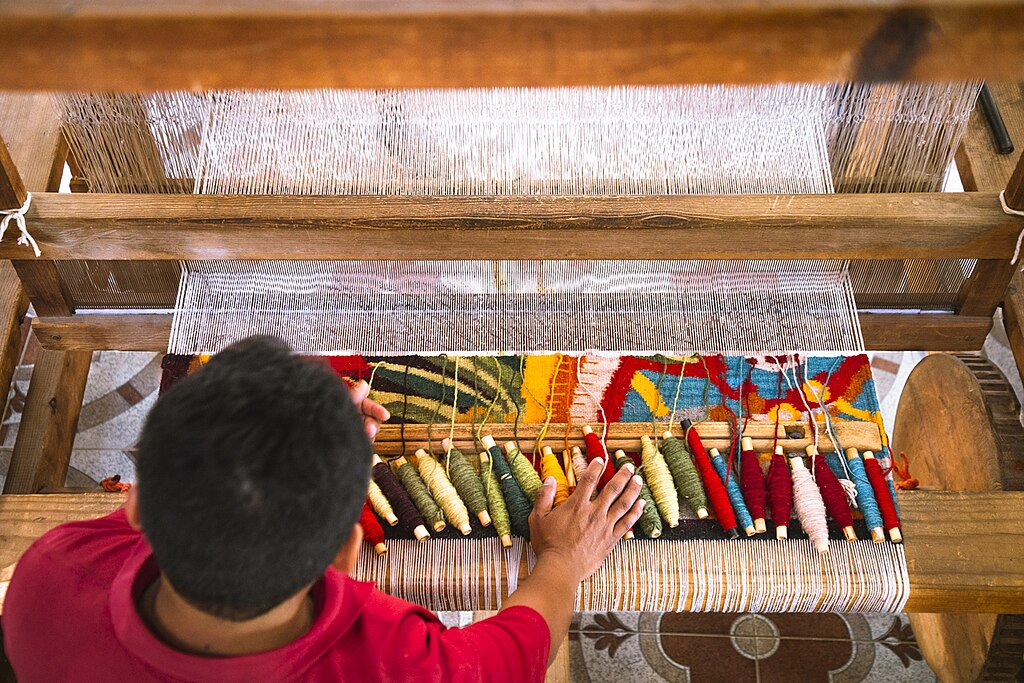
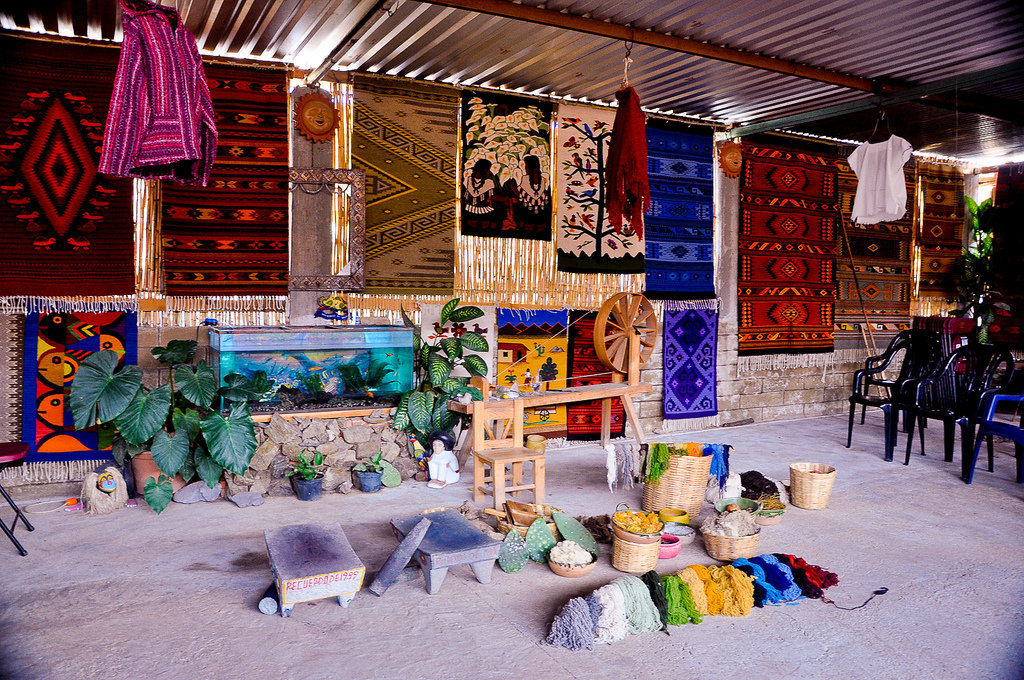
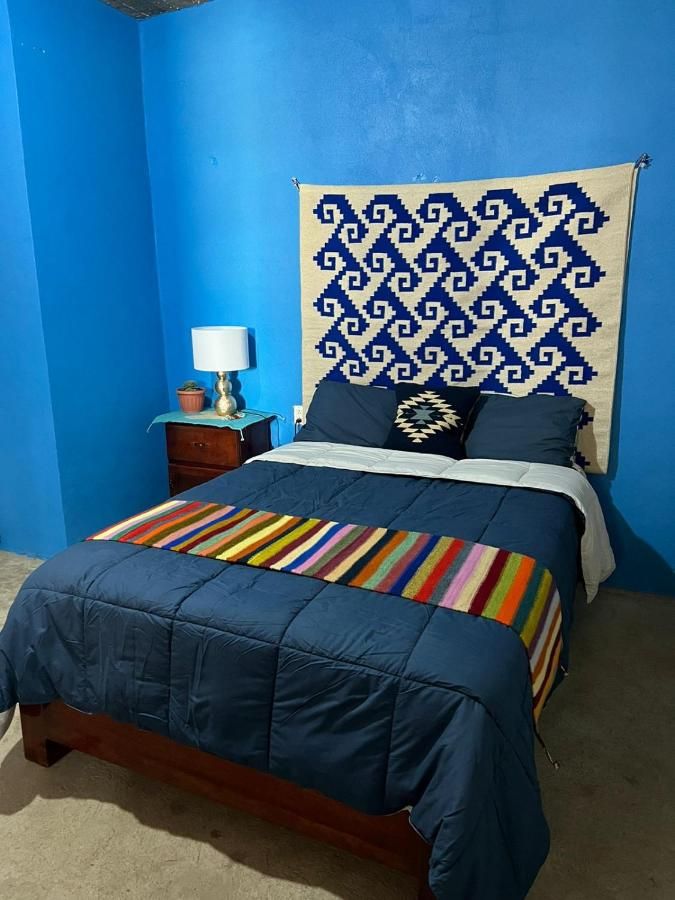
Atzompa is a region not so commonly explored by tourists, but is the home of red pottery. Select a pre-booked tour and class, or simply grab a taxi to this location. With over 800 potters in this region, we recommend taking a class with Galeria “Pitao Copycha” or visiting the incredible workshop ‘Taller de Escultura y Cerámica Coatlicue.’
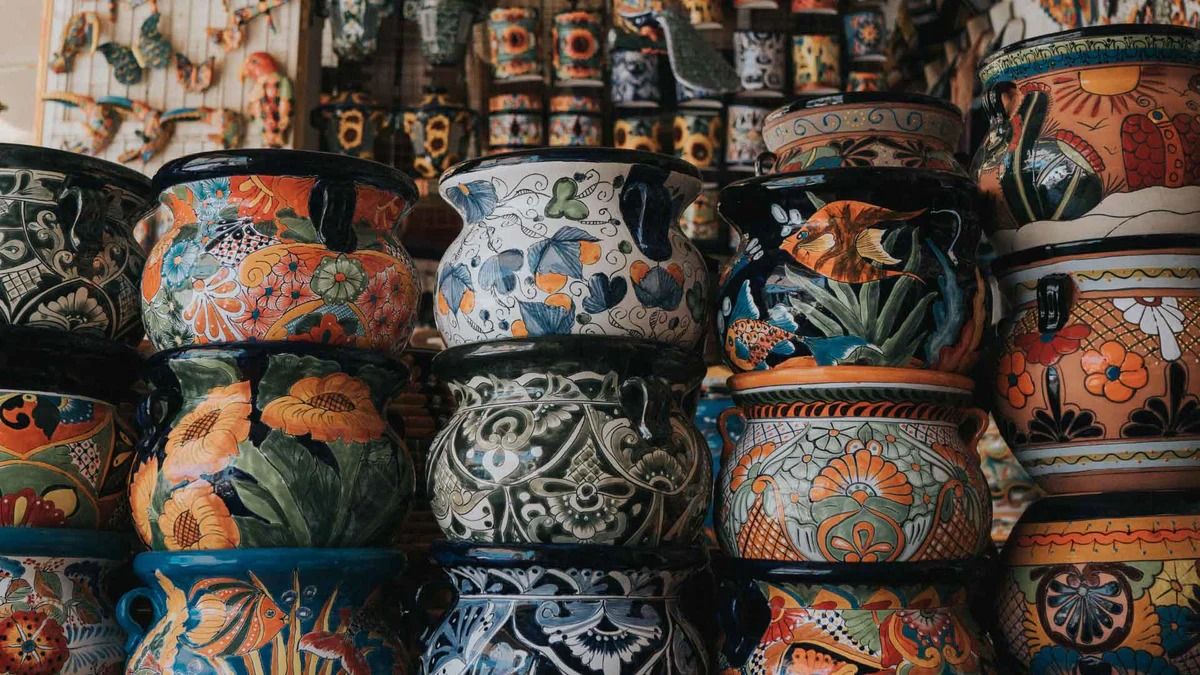
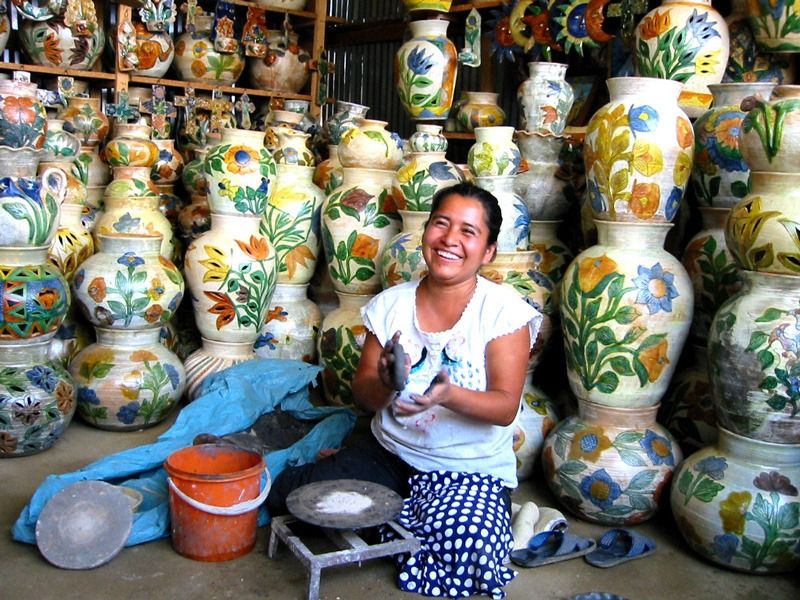
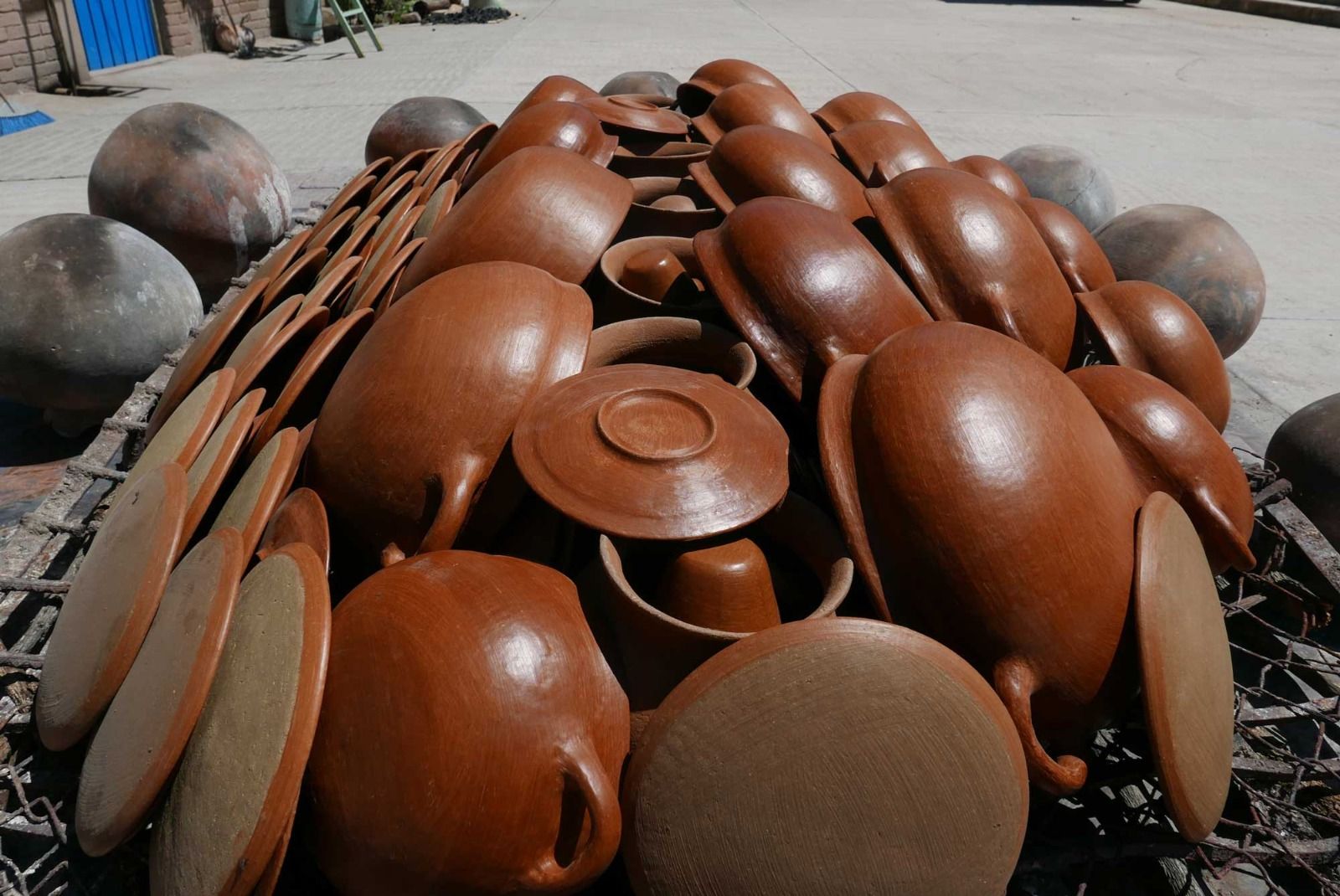
Words by Miranda Bunnis





